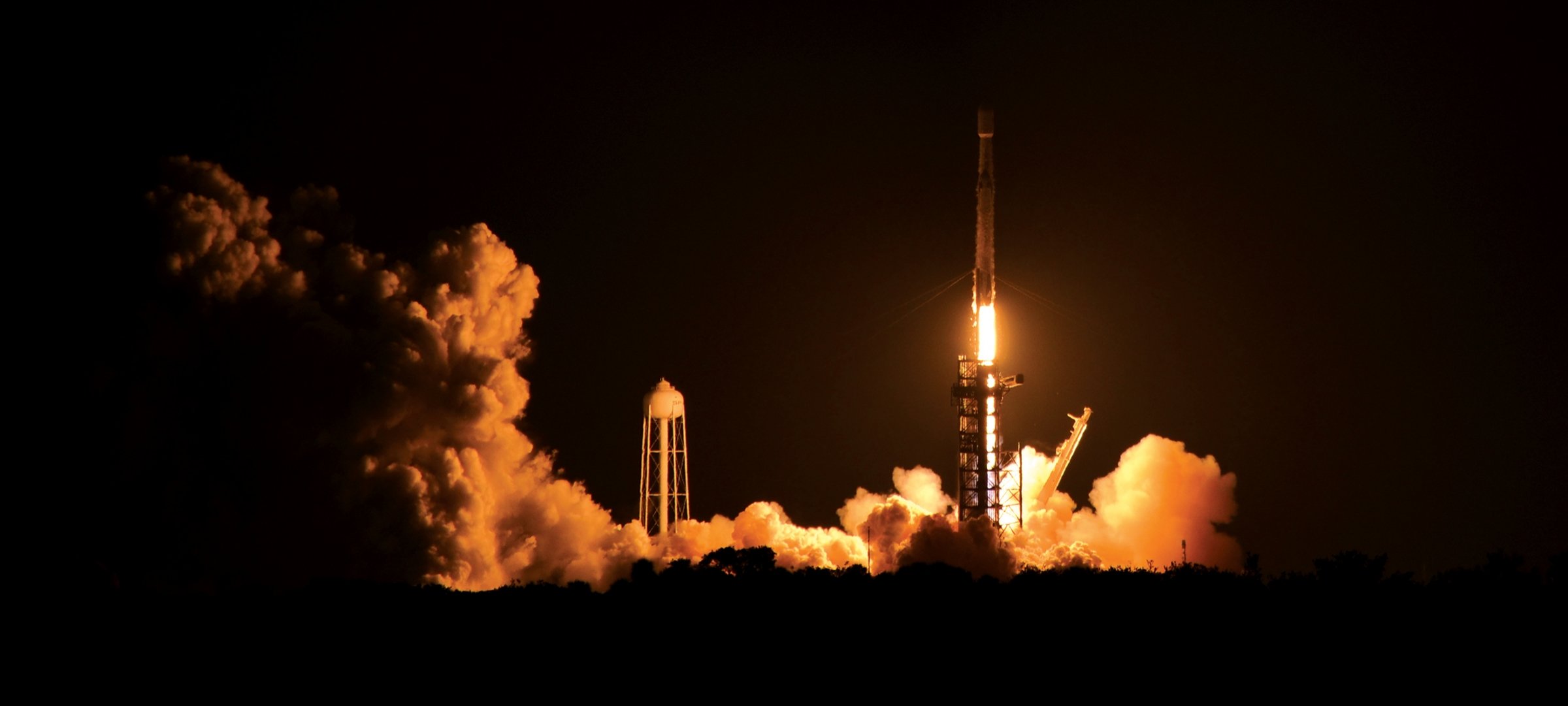Humans have been looking to the skies for hundreds of thousands of years. Now, we can actually reach them. From first flights, to Mars missions, to bringing light to the dark side of the moon, there's no end in sight for opportunities in aerospace engineering.
If you've set your sights on a career in aerospace engineering, here's what you need to know for a successful launch.
Request Information
Form loading . . .
What is Aerospace Engineering?
Aerospace engineering is the discipline of engineering dedicated to designing, testing, and manufacturing aircraft, spacecraft, satellites, missiles, and related equipment and systems. The discipline is generally split into three distinct areas: aeronautical engineering, astronautical engineering, and avionics.
Aeronautical engineering (or aeronautics) pertains to air flight within Earth's atmosphere. This includes airplanes, helicopters, unmanned aerial systems (or drones), hot air balloons, blimps, ballistic vehicles, and any other atmospheric aircraft or airships.
Astronautical engineering (sometimes called astronautics or rocket science) pertains to space flight beyond Earth's atmosphere into outer space. This includes spaceships, satellites, launch vehicles, probes, and any other orbital or suborbital spacecraft.
Avionics pertains to the electronic systems used in air and space flight applications such as control systems, communications systems, navigation systems, display systems, and more.
What do Aerospace Engineers do?
Aerospace engineers develop new technologies for use in air and space flight for the purpose of transportation, communications, exploration, and defense. This involves designing, manufacturing, and testing aircraft, spacecraft, satellites, missiles, propulsion systems, and other aerospace products and components.
They often become experts in a related field such as aerodynamics, thermodynamics, materials, celestial mechanics, flight mechanics, propulsion, acoustics, or guidance and control systems.
Common job titles associated with the aerospace engineering field include:
- Aerospace Engineer
- Aeronautical Engineer
- Astronautical Engineer
- Avionics Engineer
- Aircraft Designer
- Spacecraft Designer
- Data Processing Manager
- Inspector and Compliance Officer
- Mission or Payload Specialist
- Flight Test Engineer
- Mechanical Engineer
- Electrical Engineer
- Materials Engineer
- Systems Engineer
What Skills do Aerospace Engineers Need?
Along with a passion for flight, successful aerospace engineers typically have at least a bachelor's degree in engineering or a related field and have a strong background in mathematics, physics, chemistry, and computer science.
Additional skills which may be beneficial include:
- Analytical skills
- Business skills
- Critical-thinking skills
- Problem-solving skills
- Project management skills
- Time management skills
- Written and verbal communication skills
How Much do Aerospace Engineers Earn?
Like careers in many other engineering fields, aerospace engineers are well paid. Compared to other fields, aerospace engineers earn well above average throughout each stage of their careers. According to the U.S. Bureau of Labor Statistics, the mean salary for an aerospace engineer is $141,180, with the top ten percent earning close to $205,850.
| Mean Entry-Level Salary (Payscale) | Mean Annual Salary (BLS) | Top 10 Percent (BLS) | |
|---|---|---|---|
| $76,293 | $141,180 | $205,850 | |
|
Figures from payscale.com, accessed April 2025. Figures from U.S. Bureau of Labor Statistics (BLS), dated May 2024. |
|||
See additional engineering salary information.
How do You Become an Aerospace Engineer?
There are several paths you can take to a career in aerospace engineering. However, most entry-level aerospace engineering positions require at least a bachelor's degree in engineering or a related field. Positions that are related to national defense may need a security clearance and a US citizenship may be required for certain types and levels of clearances.
If you're currently in high school or college and are considering becoming an aerospace engineer, here are some things to consider.
In High School . . .
- Focus on your math and physics classes as these will form the basis for your aerospace engineering education. Your enjoyment (or not!) of these courses could tell you a lot about whether or not aerospace engineering is right for you.
- Research colleges and universities that would put you on a successful path to aerospace engineering. It's not necessary to major in a program called aerospace engineering to have a successful career in this industry! Most importantly, make sure the schools you're considering are ABET accredited since most employers will only consider graduates from such institutions.
- Visit the schools you're interested in and ask lots of questions about the program(s), scholarships and financial aid opportunities, and application requirements and deadlines.
- Apply to the schools you think are the right fit for you and your goals sometime between your junior year and the beginning of your senior year. Don't miss those deadlines!
In College . . .
- Work with your academic advisor to choose the appropriate program and courses that will give you the necessary knowledge and skills for a career in aerospace engineering.
- Gain experiences in real aerospace engineering projects. Look for opportunities through student organizations, professional conferences, co-ops and internships, and research projects at your institution.
- Form relationships with faculty members in your program. These connections will help you as you look for relevant aerospace engineering experience during and after your college career.
- Network with professional aerospace engineers. Whether you're at a professional conference or an on-campus career fair, seize every opportunity to form connections with professionals in the field—you never know when they could come in handy!
- Keep your resume up to date and brush up on your interviewing skills. Your institution may even have a dedicated career center that can help you.

